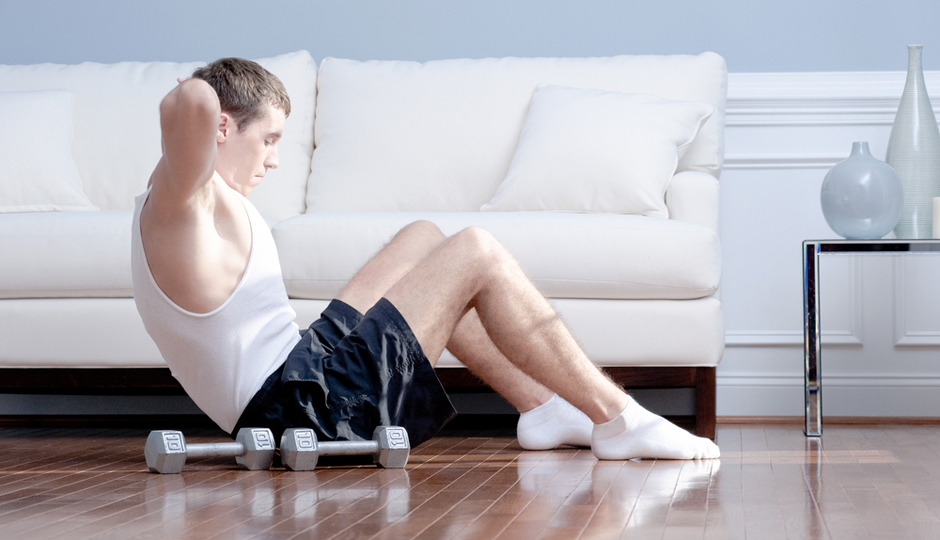How to Morph Your Apartment into a Gym

Shutterstock
Sometimes hectic schedules and nasty weather make the journey to the gym seem like a real hindrance. So why not delete the travel time and bring the gym to you? I asked trainers and designers for advice on how to turn your apartment into a do-everything workout space—without making your living room feel like a training zone.
Let’s clear up one thing right off the bat: You don’t have to live in a mansion to create a good at-home gym. “As long as you can reach your arms up and out to the side when standing, and you’re able to lie on your back and extend your arms and legs as wide as possible, you have plenty of room,” says Havertown-based trainer Audrey McKenna. So if you have about as much space as a yoga mat takes up, you’re good to go.
If you need to move furniture around to create the right amount of space, Philadelphia-based interior designer Mona Ross Berman advises installing casters on couches and chairs—those little plastic gliders would work, too—so that you can easily move things aside for your workout.
As for exercises, there are plenty that don’t require any equipment at all, other than a mat. You can target your core with sit-ups and planks, strengthen your lower body with lunges and squats, and improve flexibility with yoga poses.
If you want more of a challenge, introducing small pieces of equipment can broaden the range of possible workouts. McKenna suggests using a jump rope to add a cardio element in between strength training exercises; a medicine ball can be used for an abdominal workout or as a weight to tone arms. A physioball and ab wheel add instability to exercises to help improve core strength, while a kettlebell makes exercises like the swing, squats, rows, and dead lifts more challenging.
Roger Dickerman, who owns Relentless Fitness near Washington Square, recommends PowerBlock Dumbbells and PowerBlock Kettleblocks. Like those Russian nesting dolls, this collection condenses into one, saving you time and space by eliminating the burden of multiple sets. Bonus: All of this equipment can be stored easily when it’s not being used.
Cardio can be trickier (but not impossible) since you really need to move—and sweat—to get a great workout. McKenna suggests a spin bike since those tend to be smaller than other cardio machines and can be wheeled around; you can park it in front of the TV for your workout and back out of sight when you’re done. Even easier: If you already have a bike that you ride outside, you can get an indoor trainer that turns your road bike into an insta-living room spinner.
Berman says that it’s important to take advantage of “the forgotten spots in your home”—think: unused closets or crawl spaces, space under your couch, empty drawers. She hides her yoga mat underneath her bed behind the skirt.
Don’t feel like pulling things out every time you work out? TRX suspension-training equipment can be set up with just a door jam or sturdy attachment to provide a full body workout with a special emphasis on the core. A doorway is also a great location to install a pull up bar, which can provide a back and abdominal workout through pull ups and knee ups. (McKenna says to challenge yourself, never walk through that doorway without doing at least one pull up.) Resistance bands can be attached to the pull up bar or a door jam.
See? It’s possible to have the best of both worlds: an attractive home and a convenient spot to get your heart rate up. Buh-bye, excuses: Your next workout is closer than you think.


